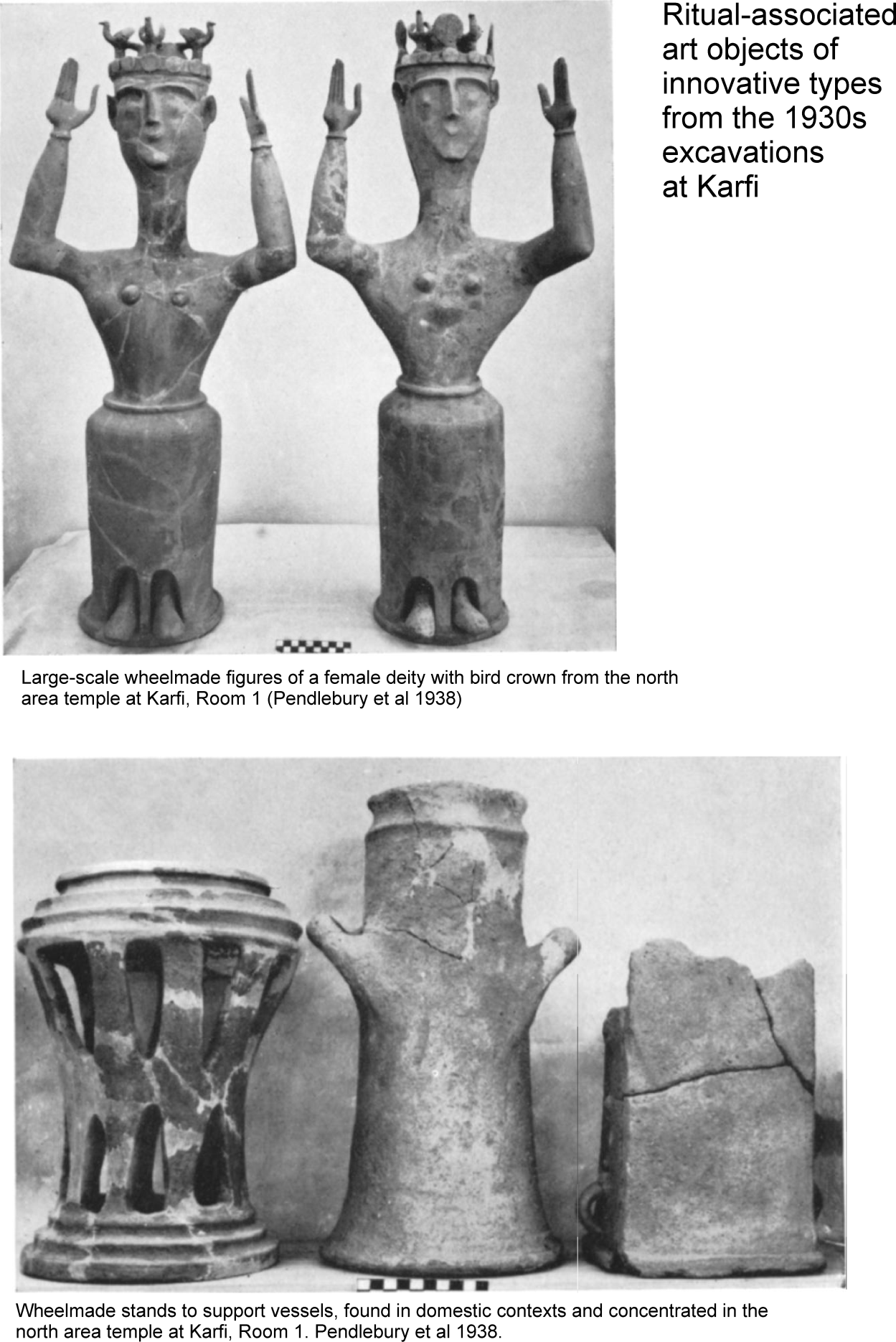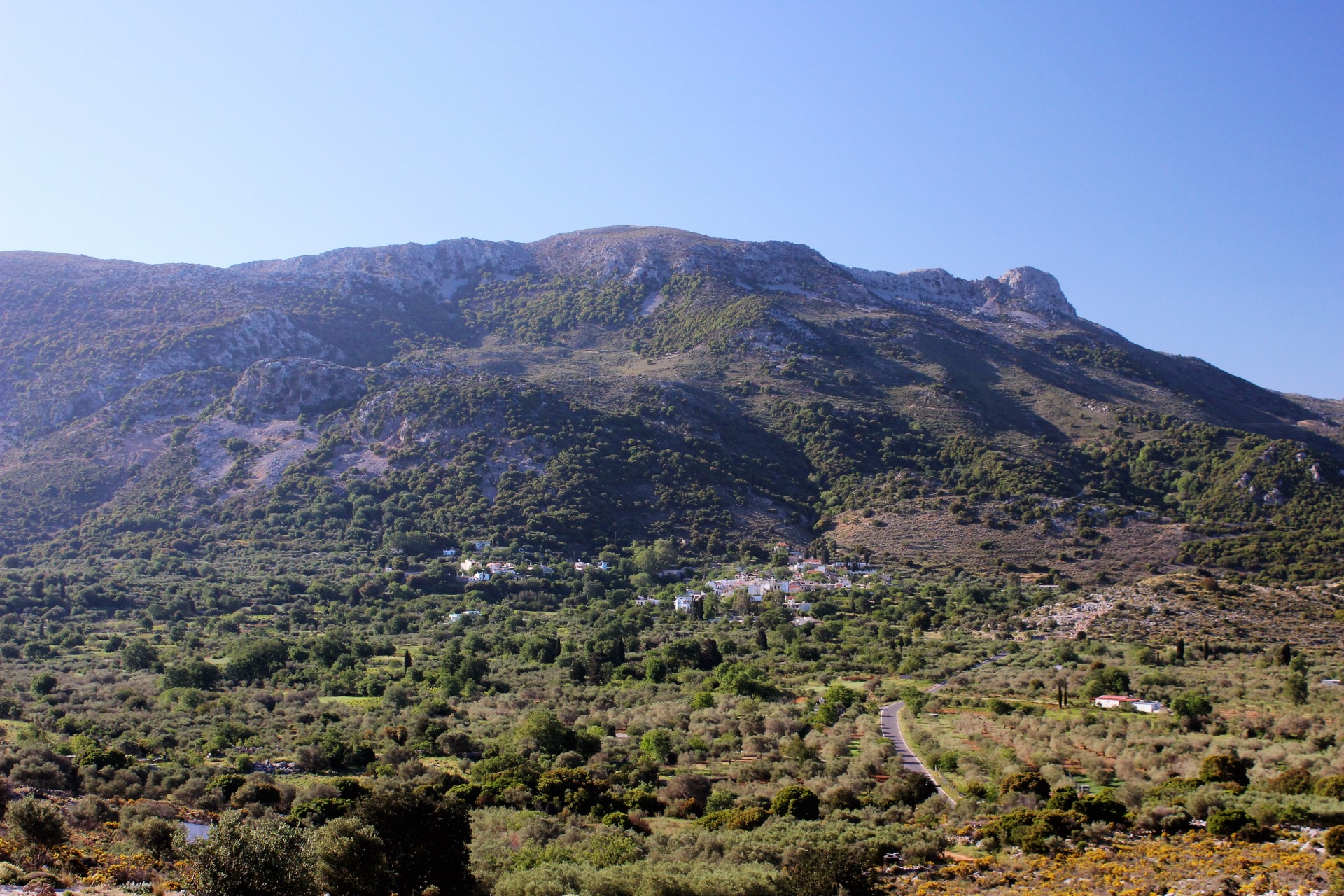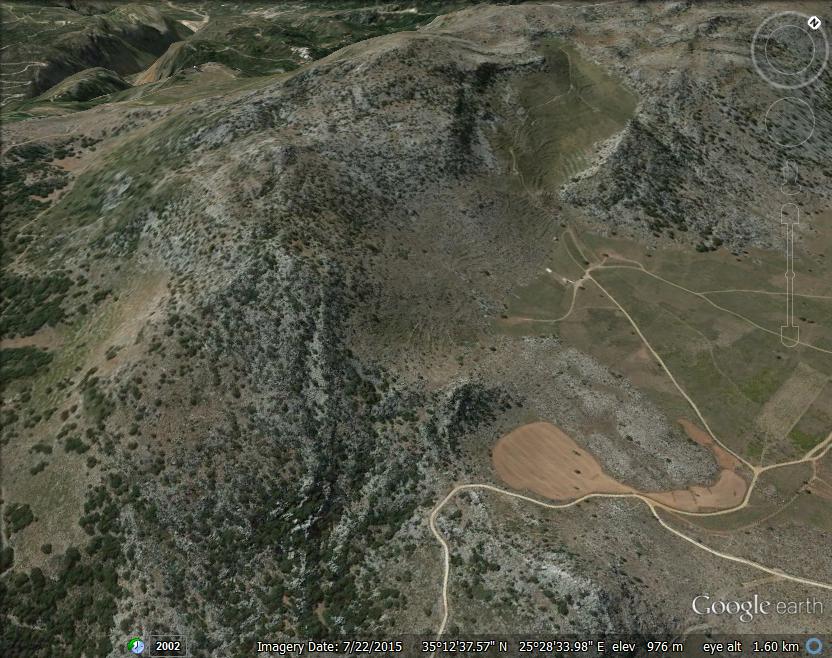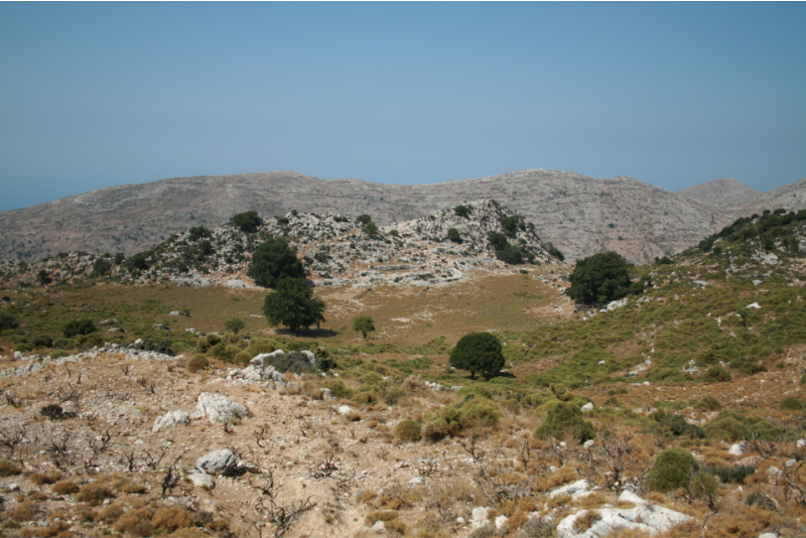Karphi Revisited Excavation Project: Exploring a Post-Crisis City
Social resilience and change through crisis in the ancient world
Exploring the mountaintops

The site warmly invites your interest and participation in our work.
A research project looking to engage local people
Our current project was formally welcomed to the region by the Demos of the Oropedio Lasithiou (Lasithi Plain) in 2018. In 2022 we met with staff of the Cultural Division of the Demos of Chersonisos to introduce our project to them, since the site lies on a border zone between the two administrative regions and administrative responsibility is currently shifting. We collaborate with the British School at Athens (2021-22 and previously), the Polish Institute of Archaeology at Athens (2023) and the Greek Ministry of Culture's Archaeological Service (from 2022, the Ephorate of Antiquities of Heraklion, previously from 2008 the Ephorate of Antiquities of Lasithi) to recruit and reach out to students, volunteers, site visitors and locally-based site workers in excavation and conservation. Students and staff involved in our project come from all over the world including Greece (Universities of Athens, Crete, Komotini, Ioannina) the UK, Germany, the USA, Spain, and Portugal.
The two co-directors from 2023 are Dr Saro Wallace (currently Senior Research Fellow of the Gerda Henkel Foundation, Germany 2021-24) and Professor Krzysztof Nowicki (State Professor of the Academy of Sciences Warsaw, Member of the Polish Institute of Archaeology at Athens and Director of Record for the 5-year program applied for in 2023. Research at the site and our involvement has a long history (reaching back to 1987) with many different sponsors and funders. We and other scholars have extensively published and presented aspects of evidence from the site and its finds (currently stored in the Museum of Heraklion) in peer-reviewed publications and lectures since the 1990s, following fundamental publications in 1938 and 1960.

John Pendlebury's finds from Karphi, including bronze and iron objects and the striking clay goddess figurines, are displayed in the Heraklion Museum...
These stands and tubes were probably used to support vessel lamps and/or vessels containing liquid offerings in cult settings, and are also known from settlements contemporary with Karphi which have been excavated more recently. They form part of a new 'town cult' set of cultural materials and behaviours appearing across Crete post-1200 BC.
.

A rich cultural landscape...
Survey work in the north Lasithi region during the last thirty years by scholars including John Pendlebury, L.Vance Watrous and Krzysztof Nowicki has revealed a dense network of contemporary settlements founded in the foothills and mountains during the crisis at the end of the late Bronze Age. The dominant use of the landscape for grazing today makes these ancient remains (walls and potsherds) clearly visible. On the right, above, is the striking Karphi peak viewed from the foothills to the north. The landmark provided an ideal setting for a Middle Bronze Age open-air 'peak' sanctuary, which we are researching parts of in our current project, as well as the focus of the later defended settlement. The settlement spread over the saddle between Karphi peak and that of Mikri Koprana visible to its left, as well as to the summit of Megali Koprana on the south, covering about 3 ha.

Why was the Karphi town founded and who lived there?
Late Bronze Age Aegean state systems based at centres of regional kingdoms, such as Knossos, Mycenae, Tiryns and Athens collapsed at c. 1200 BC. What systems replaced them, and how did new ways of organising communities foreshadow the emergence of the Greek polis state? Investigating and contextualising individual swelling practices and spaces for community activities and institutions across the whole large Karphi site (not just the saddle excavated by Pendlebury) is one of our main research objectives, enabling this question to be answered. We can note that the foundation of Karphi and other peaktop sites at this period shows concern with security, the need for coherent action at a time of social fragmentation, and the willingness to address significant economic challenges including year-round living in a rugged landscape 1140m above sea level.

How does one get to Karphi?
The protected ('Alpha Zone') archaeological zones around the settlement and its cemeteries prevent the bulldozing of a modern road. which would be likely not only to damage the archaeological remains but also to affect the tranquillity and enjoyment of the site and its role as a wildlife habitat by encouraging large-scale visiting. The lack of a road restricts access to people willing to make the steep 20-minute walk to the peaks from the Nisimo plain, near the village of Tzermiado, or from the 'Homo Sapiens' park near the village of Kera. There are other walk routes in, and we want to produce informative trails to highlight them and explain the archaeological heritage of the wider area for a range of visitors and locals arriving by foot or on horseback.
A spectacular heritage landscape
Cult cave in the mountains
The Middle Bronze Age to Classical cult cave of Psychro (the 'Dictaean Cave') lies in the mountains south across the Lasithi plain from Karphi (seen here with Megali Koprana in the foreground.

Contemporary settlements
Understanding of contemporary unexcavated sites in the north Lasithi area has been developed through the project's survey and ceramic petrography components. This is Kastello above Krasi in the north Lasithi foothills. It is a large site founded contemporarily with Karphi which continued in use beyond Karphi's abandonment, likely as a satellite of an emerging polis settlement at Papoura. Papoura lies below Karphi and directly on the pass into the Lasithi plain.

Natural defence at altitude
There is a clustering of sites in this area following the collapse of state systems across the Aegean at c. 1200 BC. The Lasithi plain provides a protected, extensive agricultural zone behind a wall of mountains offering great vantage points over coastlands and foothills in all directions, with well-guarded passes. This is Siderokefala, guarding the main valley entrance to the north of the plain (Selli/Ambelos).
